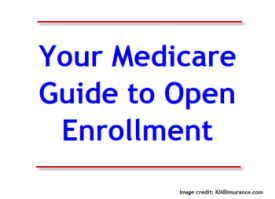
Medicare Annual Enrollment season takes place annually from October 15 to December 7 and offers the opportunity for recipients to make changes to their Medicare Advantage program or Plan D prescription drug plans as discussed here on medicare.gov.
There are several reasons to make changes to existing plans, especially as insurance companies make their own changes to coverage. Recipients must acclimatize to these changes, both to ensure operative coverage and to save money. With better plans out there and changes made to current plans, the Annual Enrollment period proposes plentiful prospects for Medicare users.
Getting started when it comes to reviewing Medicare coverage can present its own compound challenges, but the best place to start is at the mailbox.
Come October, insurance companies begin to mail out valuable information about their various plans and policies. CMS, or the Centers for Medicare and Medicaid Services, will roll out mail referencing coverage changes to anticipate. This presents the perfect occasion to lay out appropriate information and start making some important choices for Annual Enrollment.
Annual Notice of Change or Evidence of Coverage
There will be several mailers to watch for, starting with the Annual Notice of Change or Evidence of Coverage. The document must be mailed to recipients by September 30, but it’s also available online and can be obtained with a phone call if it does not arrive by early October. The Annual Notice of Change or Evidence of Coverage lists details about the current plan and informs recipients about changes to existing coverage, which sets a foundation for the Annual Enrollment process.
This document must be mailed to users of Medicare, as this information is required to make informed decisions regarding subsequent coverage. Some changes may be inconsequential, but others can make a significant impact on plans and users must be entitled to make suitable changes during the Annual Enrollment period.
The Medicare and You Handbook
In late September, the Centers for Medicare and Medicaid Services mails out the Medicare and You Handbook. This provides beneficial information affecting the specific plans. The handbook is now available online at medicare.gov and informs recipients as to how coverage works, what plans cover, and other relevant details correlated to things like medical equipment and available services.
Other Mailed Items
Other things will come in the mail during this period, too. The Centers for Medicare and Medicaid Services will inform recipients if current plans are no longer available. Insurance companies will inform Medicare recipients as to applicable specifics if certain plans are superseded or otherwise changed. Some insurance companies will move users to new, valid plans in lieu of the old ones, so keep an eye on the mail for this opportunity.
Letters may be received from the Centers for Medicare and Medicaid Services if a current plan has received a low “star rating” for at least three successive years. Remember that five-star plans are considered high quality and plans with a rating of three or lower are of lower quality. The star rating system was developed by the Centers for Medicare and Medicaid Services to help consumers determine how Medicare Advantage plans perform relative to the competition.
The Centers for Medicare and Medicaid Services mail out necessities relating to Part D considerations like the low income subsidy, which provides extra assistance for those with limited incomes. This benefit is provided in conjunction with the Centers for Medicare and Medicaid Services and the Social Security Administration. Qualifications for this low income subsidy will be mailed, as will facts pertaining to “reassignment” to different plans.
Going Paperless
As explained, there is an awful lot of documentation that can come in the mail leading up to the Medicare Annual Enrollment period. The sheer mass of paperwork is often intimidating, but the details are important. The Annual Enrollment process is worthwhile because it offers a window for substantial savings over the year and leads to more inclusive, valuable coverage for recipients and their families.
Recipients can cut down on the paper by going paperless, a feature offered by most carriers. Notifications characteristically received by mail can be received by electronic mail, with a simple sign-up process available on the Medicare website. This opens the door to more immediate, expedient information, like the Medicare and You handbook, and lets recipients make decisions at their own pace. If you would like to go paperless yourself, you can do that here.



